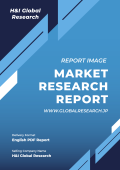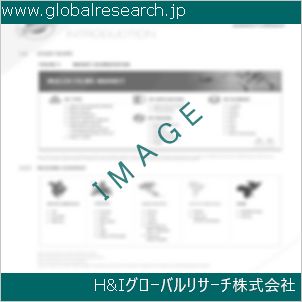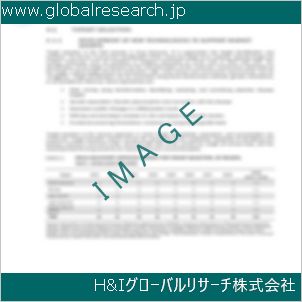1. Executive Summary
1.1. Global Market Outlook
1.2. Summary of Statistics
1.3. Key Market Characteristics & Attributes
1.4. Analysis and Recommendations
2. Market Overview
2.1. Market Coverage / Taxonomy
2.2. Market Definition / Scope / Limitations
3. Market Risks and Trends Assessment
3.1. Risk Assessment
3.1.1. COVID-19 Crisis and Impact on Wearable Breast Pumps Demand
3.1.2. COVID-19 Impact Benchmark with Previous Crisis
3.1.3. Impact on Market Value (US$ Mn)
3.1.4. Assessment by Key Countries
3.1.5. Assessment by Key Market Segments
3.1.6. Action Points and Recommendation for Suppliers
3.2. Key Trends Impacting the Market
3.3. Formulation and Product Development Trends
4. Market Background and Foundation Data Points
4.1. Global Wearable Breast Pumps Market (US$ Mn)
4.2. Wearable Breast Pumps Market Opportunity Assessment (US$ Mn)
4.2.1. Total Available Market
4.2.2. Serviceable Addressable Market
4.2.3. Serviceable Obtainable Market
4.3. Market Scenario Forecast
4.3.1. Demand in optimistic Scenario
4.3.2. Demand in Likely Scenario
4.3.3. Demand in Conservative Scenario
4.4. Investment Feasibility Analysis
4.4.1. Investment in Established Markets
4.4.1.1. In Short Term
4.4.1.2. In Long Term
4.4.2. Investment in Emerging Markets
4.4.2.1. In Short Term
4.4.2.2. In Long Term
4.5. Forecast Factors – Relevance & Impact
4.5.1. Top Companies Historical Growth
4.5.2. Global Wearable Breast Pumps Market Growth
4.5.3. District Cooling Adoption Rate, By Country
4.6. Market Dynamics
4.6.1. Market Driving Factors and Impact Assessment
4.6.2. Prominent Market Challenges and Impact Assessment
4.6.3. Wearable Breast Pumps Market Opportunities
4.6.4. Prominent Trends in the Global Market & Their Impact Assessment
5. Key Success Factors
5.1. Manufacturers’ Focus on Low Penetration High Growth Markets
5.2. Banking on with Segments High Incremental Opportunity
5.3. Peer Benchmarking
6. Global Wearable Breast Pumps Market Demand Analysis 2017-2021 and Forecast, 2022-2032
6.1. Historical Market Analysis, 2017-2021
6.2. Current and Future Market Projections, 2022-2032
6.3. Y-o-Y Growth Trend Analysis
7. Global Wearable Breast Pumps Market Value Analysis 2017-2021 and Forecast, 2022-2032
7.1. Historical Market Value (US$ Mn) Analysis, 2017-2021
7.2. Current and Future Market Value (US$ Mn) Projections, 2022-2032
7.2.1. Y-o-Y Growth Trend Analysis
7.2.2. Absolute $ Opportunity Analysis
8. Global Wearable Breast Pumps Market Analysis 2017-2021 and Forecast 2022-2032, By Technology
8.1. Introduction / Key Findings
8.2. Historical Market Size (US$ Mn) Analysis By Technology, 2017-2021
8.3. Current and Future Market Size (US$ Mn) Analysis and Forecast By Technology, 2022-2032
8.3.1. Smart wearable
8.3.2. Manual
8.3.3. Battery-operated
8.4. Market Attractiveness Analysis By Technology
9. Global Wearable Breast Pumps Market Analysis 2017-2021 and Forecast 2022-2032, By Component
9.1. Introduction / Key Findings
9.2. Historical Market Size (US$ Mn) Analysis By Component, 2017-2021
9.3. Current and Future Market Size (US$ Mn) Analysis and Forecast By Component, 2022-2032
9.3.1. Wearable Pumps
9.3.2. Accessories
9.4. Market Attractiveness Analysis By Component
10. Global Wearable Breast Pumps Market Analysis 2017-2021 and Forecast 2022-2032, By Region
10.1. Introduction
10.2. Historical Market Size (US$ Mn) Analysis By Region, 2017-2021
10.3. Current Market Size (US$ Mn) & Analysis and Forecast By Region, 2022-2032
10.3.1. North America
10.3.2. Latin America
10.3.3. Europe
10.3.4. Asia Pacific
10.3.5. Middle East and Africa (MEA)
10.4. Market Attractiveness Analysis By Region
11. North America Wearable Breast Pumps Market Analysis 2017-2021 and Forecast 2022-2032
11.1. Introduction
11.2. Pricing Analysis
11.3. Historical Market Value (US$ Mn) Trend Analysis By Market Taxonomy, 2017-2021
11.4. Market Value (US$ Mn) & Forecast By Market Taxonomy, 2022-2032
11.4.1. By Country
11.4.1.1. U.S.
11.4.1.2. Canada
11.4.1.3. Rest of North America
11.4.2. By Technology
11.4.3. By Component
11.5. Market Attractiveness Analysis
11.5.1. By Country
11.5.2. By Technology
11.5.3. By Component
12. Latin America Wearable Breast Pumps Market Analysis 2017-2021 and Forecast 2022-2032
12.1. Introduction
12.2. Pricing Analysis
12.3. Historical Market Value (US$ Mn) Trend Analysis By Market Taxonomy, 2017-2021
12.4. Market Value (US$ Mn) & Forecast By Market Taxonomy, 2022-2032
12.4.1. By Country
12.4.1.1. Brazil
12.4.1.2. Mexico
12.4.1.3. Rest of Latin America
12.4.2. By Technology
12.4.3. By Component
12.5. Market Attractiveness Analysis
12.5.1. By Country
12.5.2. By Technology
12.5.3. By Component
13. Europe Wearable Breast Pumps Market Analysis 2017-2021 and Forecast 2022-2032
13.1. Introduction
13.2. Pricing Analysis
13.3. Historical Market Value (US$ Mn) Trend Analysis By Market Taxonomy, 2017-2021
13.4. Market Value (US$ Mn) & Forecast By Market Taxonomy, 2022-2032
13.4.1. By Country
13.4.1.1. Germany
13.4.1.2. France
13.4.1.3. U.K.
13.4.1.4. Italy
13.4.1.5. Benelux
13.4.1.6. Nordic Countries
13.4.1.7. Rest of Europe
13.4.2. By Technology
13.4.3. By Component
13.5. Market Attractiveness Analysis
13.5.1. By Country
13.5.2. By Technology
13.5.3. By Component
14. Asia Pacific Wearable Breast Pumps Market Analysis 2017-2021 and Forecast 2022-2032
14.1. Introduction
14.2. Pricing Analysis
14.3. Historical Market Value (US$ Mn) Trend Analysis By Market Taxonomy, 2017-2021
14.4. Market Value (US$ Mn) & Forecast By Market Taxonomy, 2022-2032
14.4.1. By Country
14.4.1.1. China
14.4.1.2. Japan
14.4.1.3. South Korea
14.4.1.4. Rest of Asia Pacific
14.4.2. By Technology
14.4.3. By Component
14.5. Market Attractiveness Analysis
14.5.1. By Country
14.5.2. By Technology
14.5.3. By Component
15. Middle East and Africa Wearable Breast Pumps Market Analysis 2017-2021 and Forecast 2022-2032
15.1. Introduction
15.2. Pricing Analysis
15.3. Historical Market Value (US$ Mn) Trend Analysis By Market Taxonomy, 2017-2021
15.4. Market Value (US$ Mn) & Forecast By Market Taxonomy, 2022-2032
15.4.1. By Country
15.4.1.1. GCC Countries
15.4.1.2. South Africa
15.4.1.3. Turkey
15.4.1.4. Rest of Middle East and Africa
15.4.2. By Technology
15.4.3. By Component
15.5. Market Attractiveness Analysis
15.5.1. By Country
15.5.2. By Technology
15.5.3. By Component
16. Key Countries Wearable Breast Pumps Market Analysis 2017-2021 and Forecast 2022-2032
16.1. Introduction
16.1.1. Market Value Proportion Analysis, By Key Countries
16.1.2. Global Vs. Country Growth Comparison
16.2. US Wearable Breast Pumps Market Analysis
16.2.1. Value Proportion Analysis by Market Taxonomy
16.2.2. Value & Analysis and Forecast by Market Taxonomy, 2017-2032
16.2.2.1. By Technology
16.2.2.2. By Component
16.3. Canada Wearable Breast Pumps Market Analysis
16.3.1. Value Proportion Analysis by Market Taxonomy
16.3.2. Value & Analysis and Forecast by Market Taxonomy, 2017-2032
16.3.2.1. By Technology
16.3.2.2. By Component
16.4. Mexico Wearable Breast Pumps Market Analysis
16.4.1. Value Proportion Analysis by Market Taxonomy
16.4.2. Value & Analysis and Forecast by Market Taxonomy, 2017-2032
16.4.2.1. By Technology
16.4.2.2. By Component
16.5. Brazil Wearable Breast Pumps Market Analysis
16.5.1. Value Proportion Analysis by Market Taxonomy
16.5.2. Value & Analysis and Forecast by Market Taxonomy, 2017-2032
16.5.2.1. By Technology
16.5.2.2. By Component
16.6. Germany Wearable Breast Pumps Market Analysis
16.6.1. Value Proportion Analysis by Market Taxonomy
16.6.2. Value & Analysis and Forecast by Market Taxonomy, 2017-2032
16.6.2.1. By Technology
16.6.2.2. By Component
16.7. France Wearable Breast Pumps Market Analysis
16.7.1. Value Proportion Analysis by Market Taxonomy
16.7.2. Value & Analysis and Forecast by Market Taxonomy, 2017-2032
16.7.2.1. By Technology
16.7.2.2. By Component
16.8. Italy Wearable Breast Pumps Market Analysis
16.8.1. Value Proportion Analysis by Market Taxonomy
16.8.2. Value & Analysis and Forecast by Market Taxonomy, 2017-2032
16.8.2.1. By Technology
16.8.2.2. By Component
16.9. BENELUX Wearable Breast Pumps Market Analysis
16.9.1. Value Proportion Analysis by Market Taxonomy
16.9.2. Value & Analysis and Forecast by Market Taxonomy, 2017-2032
16.9.2.1. By Technology
16.9.2.2. By Component
16.10. UK Wearable Breast Pumps Market Analysis
16.10.1. Value Proportion Analysis by Market Taxonomy
16.10.2. Value & Analysis and Forecast by Market Taxonomy, 2017-2032
16.10.2.1. By Technology
16.10.2.2. By Component
16.11. Nordic Countries Wearable Breast Pumps Market Analysis
16.11.1. Value Proportion Analysis by Market Taxonomy
16.11.2. Value & Analysis and Forecast by Market Taxonomy, 2017-2032
16.11.2.1. By Technology
16.11.2.2. By Component
16.12. China Wearable Breast Pumps Market Analysis
16.12.1. Value Proportion Analysis by Market Taxonomy
16.12.2. Value & Analysis and Forecast by Market Taxonomy, 2017-2032
16.12.2.1. By Technology
16.12.2.2. By Component
16.13. Japan Wearable Breast Pumps Market Analysis
16.13.1. Value Proportion Analysis by Market Taxonomy
16.13.2. Value & Analysis and Forecast by Market Taxonomy, 2017-2032
16.13.2.1. By Technology
16.13.2.2. By Component
16.14. South Korea Wearable Breast Pumps Market Analysis
16.14.1. Value Proportion Analysis by Market Taxonomy
16.14.2. Value & Analysis and Forecast by Market Taxonomy, 2017-2032
16.14.2.1. By Technology
16.14.2.2. By Component
16.15. GCC Countries Wearable Breast Pumps Market Analysis
16.15.1. Value Proportion Analysis by Market Taxonomy
16.15.2. Value & Analysis and Forecast by Market Taxonomy, 2017-2032
16.15.2.1. By Technology
16.15.2.2. By Component
16.16. South Africa Wearable Breast Pumps Market Analysis
16.16.1. Value Proportion Analysis by Market Taxonomy
16.16.2. Value & Analysis and Forecast by Market Taxonomy, 2017-2032
16.16.2.1. By Technology
16.16.2.2. By Component
16.17. Turkey Wearable Breast Pumps Market Analysis
16.17.1. Value Proportion Analysis by Market Taxonomy
16.17.2. Value & Analysis and Forecast by Market Taxonomy, 2017-2032
16.17.2.1. By Technology
16.17.2.2. By Component
16.17.3. Competition Landscape and Player Concentration in the Country
17. Market Structure Analysis
17.1. Market Analysis by Tier of Companies
17.2. Market Concentration
17.3. Market Share Analysis of Top Players
17.4. Market Presence Analysis
17.4.1. By Regional footprint of Players
17.4.2. Product footprint by Players
18. Competition Analysis
18.1. Competition Dashboard
18.2. Competition Benchmarking
18.3. Competition Deep Dive
18.3.1. Koninklijke Philips N.V.
18.3.1.1. Overview
18.3.1.2. Product Portfolio
18.3.1.3. Sales Footprint
18.3.1.4. Strategy Overview
18.3.2. Medela Llc
18.3.2.1. Overview
18.3.2.2. Product Portfolio
18.3.2.3. Sales Footprint
18.3.2.4. Strategy Overview
18.3.3. Willow
18.3.3.1. Overview
18.3.3.2. Product Portfolio
18.3.3.3. Sales Footprint
18.3.3.4. Strategy Overview
18.3.4. Chiaro Technology Ltd. And Elvie
18.3.4.1. Overview
18.3.4.2. Product Portfolio
18.3.4.3. Sales Footprint
18.3.4.4. Strategy Overview
18.3.5. Baby Buddha
18.3.5.1. Overview
18.3.5.2. Product Portfolio
18.3.5.3. Sales Footprint
18.3.5.4. Strategy Overview
18.3.6. Freemie
18.3.6.1. Overview
18.3.6.2. Product Portfolio
18.3.6.3. Sales Footprint
18.3.6.4. Strategy Overview
18.3.7. Ameda, Inc.
18.3.7.1. Overview
18.3.7.2. Product Portfolio
18.3.7.3. Sales Footprint
18.3.7.4. Strategy Overview
18.3.8. SPECTRA BABY USA
18.3.8.1. Overview
18.3.8.2. Product Portfolio
18.3.8.3. Sales Footprint
18.3.8.4. Strategy Overview
18.3.9. BelleMa Co.
18.3.9.1. Overview
18.3.9.2. Product Portfolio
18.3.9.3. Sales Footprint
18.3.9.4. Strategy Overview
18.3.10. MOTIF MEDICAL
18.3.10.1. Overview
18.3.10.2. Product Portfolio
18.3.10.3. Sales Footprint
18.3.10.4. Strategy Overview
18.3.11. iAPOY
18.3.11.1. Overview
18.3.11.2. Product Portfolio
18.3.11.3. Sales Footprint
18.3.11.4. Strategy Overview
19. Assumptions and Acronyms Used
20. Research Methodolog
Table 1: Global Wearable Breast Pumps Market Value (US$ Mn), By Technology, 2017 – 2021
Table 2: Global Wearable Breast Pumps Market Value (US$ Mn), By Technology, 2022 – 2032
Table 3: Global Wearable Breast Pumps Market Value (US$ Mn), By Component, 2017 – 2021
Table 4: Global Wearable Breast Pumps Market Value (US$ Mn), By Component, 2022 – 2032
Table 5: Global Wearable Breast Pumps Market, By Region, 2017 – 2021
Table 6: Global Wearable Breast Pumps Market, By Region, 2022 – 2032
Table 7: North America Wearable Breast Pumps Market Value (US$ Mn), By Technology, 2017 – 2021
Table 8: North America Wearable Breast Pumps Market Value (US$ Mn), By Technology, 2022 – 2032
Table 9: North America Wearable Breast Pumps Market Value (US$ Mn), By Component, 2017 – 2021
Table 10: North America Wearable Breast Pumps Market Value (US$ Mn), By Component, 2022 – 2032
Table 11: North America Wearable Breast Pumps Market, By Country, 2017 – 2021
Table 12: North America Wearable Breast Pumps Market, By Country, 2022 – 2032
Table 13: Latin America Wearable Breast Pumps Market Value (US$ Mn), By Technology, 2017 – 2021
Table 14: Latin America Wearable Breast Pumps Market Value (US$ Mn), By Technology, 2022 – 2032
Table 15: Latin America Wearable Breast Pumps Market Value (US$ Mn), By Component, 2017 – 2021
Table 16: Latin America Wearable Breast Pumps Market Value (US$ Mn), By Component, 2022 – 2032
Table 17: Latin America Wearable Breast Pumps Market, By Country, 2017 – 2021
Table 18: Latin America Wearable Breast Pumps Market, By Country, 2022 – 2032
Table 19: Europe Wearable Breast Pumps Market Value (US$ Mn), By Technology, 2017 – 2021
Table 20: Europe Wearable Breast Pumps Market Value (US$ Mn), By Technology, 2022 – 2032
Table 21: Europe Wearable Breast Pumps Market Value (US$ Mn), By Component, 2017 – 2021
Table 22: Europe Wearable Breast Pumps Market Value (US$ Mn), By Component, 2022 – 2032
Table 23: Europe Wearable Breast Pumps Market, By Country, 2017 – 2021
Table 24: Europe Wearable Breast Pumps Market, By Country, 2022 – 2032
Table 25: Asia Pacific Wearable Breast Pumps Market Value (US$ Mn), By Technology, 2017 – 2021
Table 26: Asia Pacific Wearable Breast Pumps Market Value (US$ Mn), By Technology, 2022 – 2032
Table 27: Asia Pacific Wearable Breast Pumps Market Value (US$ Mn), By Component, 2017 – 2021
Table 28: Asia Pacific Wearable Breast Pumps Market Value (US$ Mn), By Component, 2022 – 2032
Table 29: Asia Pacific Wearable Breast Pumps Market, By Country, 2017 – 2021
Table 30: Asia Pacific Wearable Breast Pumps Market, By Country, 2022 – 2032
Table 31: MEA Wearable Breast Pumps Market Value (US$ Mn), By Technology, 2017 – 2021
Table 32: MEA Wearable Breast Pumps Market Value (US$ Mn), By Technology, 2022 – 2032
Table 33: MEA Wearable Breast Pumps Market Value (US$ Mn), By Component, 2017 – 2021
Table 34: MEA Wearable Breast Pumps Market Value (US$ Mn), By Component, 2022 – 2032
Table 35: MEA Wearable Breast Pumps Market, By Country, 2017 – 2021
Table 36: MEA Wearable Breast Pumps Market, By Country, 2022 – 2032
Table 37: Global Wearable Breast Pumps Market Incremental $ Opportunity, By Technology, 2017 - 2021
Table 38: Global Wearable Breast Pumps Market Incremental $ Opportunity, By Component, 2022 – 2032
Table 39: Global Wearable Breast Pumps Market Incremental $ Opportunity, By Region, 2022 – 2032
Table 40: North America Wearable Breast Pumps Market Incremental $ Opportunity, By Technology, 2017 - 2021
Table 41: North America Wearable Breast Pumps Market Incremental $ Opportunity, By Component, 2022 – 2032
Table 42: North America Wearable Breast Pumps Market Incremental $ Opportunity, By Country, 2022 – 2032
Table 43: Latin America Wearable Breast Pumps Market Incremental $ Opportunity, By Technology, 2017 - 2021
Table 44: Latin America Wearable Breast Pumps Market Incremental $ Opportunity, By Component, 2022 – 2032
Table 45: Latin America Wearable Breast Pumps Market Incremental $ Opportunity, By Country, 2022 – 2032
Table 46: Europe Wearable Breast Pumps Market Incremental $ Opportunity, By Technology, 2017 - 2021
Table 47: Europe Wearable Breast Pumps Market Incremental $ Opportunity, By Component, 2022 – 2032
Table 48: Europe Wearable Breast Pumps Market Incremental $ Opportunity, By Country, 2022 - 2032
Table 49: Asia Pacific Wearable Breast Pumps Market Incremental $ Opportunity, By Technology, 2017 - 2021
Table 50: Asia Pacific Wearable Breast Pumps Market Incremental $ Opportunity, By Component, 2022 – 2032
Table 51: Asia Pacific Wearable Breast Pumps Market Incremental $ Opportunity, By Country, 2022 – 2032
Table 52: MEA Wearable Breast Pumps Market Incremental $ Opportunity, By Technology, 2017 - 2021
Table 53: MEA Wearable Breast Pumps Market Incremental $ Opportunity, By Component, 2022 – 2032
Table 54: MEA Wearable Breast Pumps Market Incremental $ Opportunity, By Country, 2022 - 2032
❖ 免責事項 ❖
http://www.globalresearch.jp/disclaimer












